
Figure 1: A transparent ETFE membrane keeps the 3d printed shells from sublimating into the Martian atmosphere
Water is the basis for life. Our solar system is proving to be increasingly saturated with water. More than five million cubic kilometers of water ice have been identified on Mars, enough to cover the planet to a depth of thirty five meters. The Mars Ice House project taps into this vast supply of water ice to propose an autonomously 3d printed habitat for four explorers. The project has been awarded first place in NASA's Centennial Challenge Mars Habitat Competition, and is slated for a full scale prototype in the next phase.
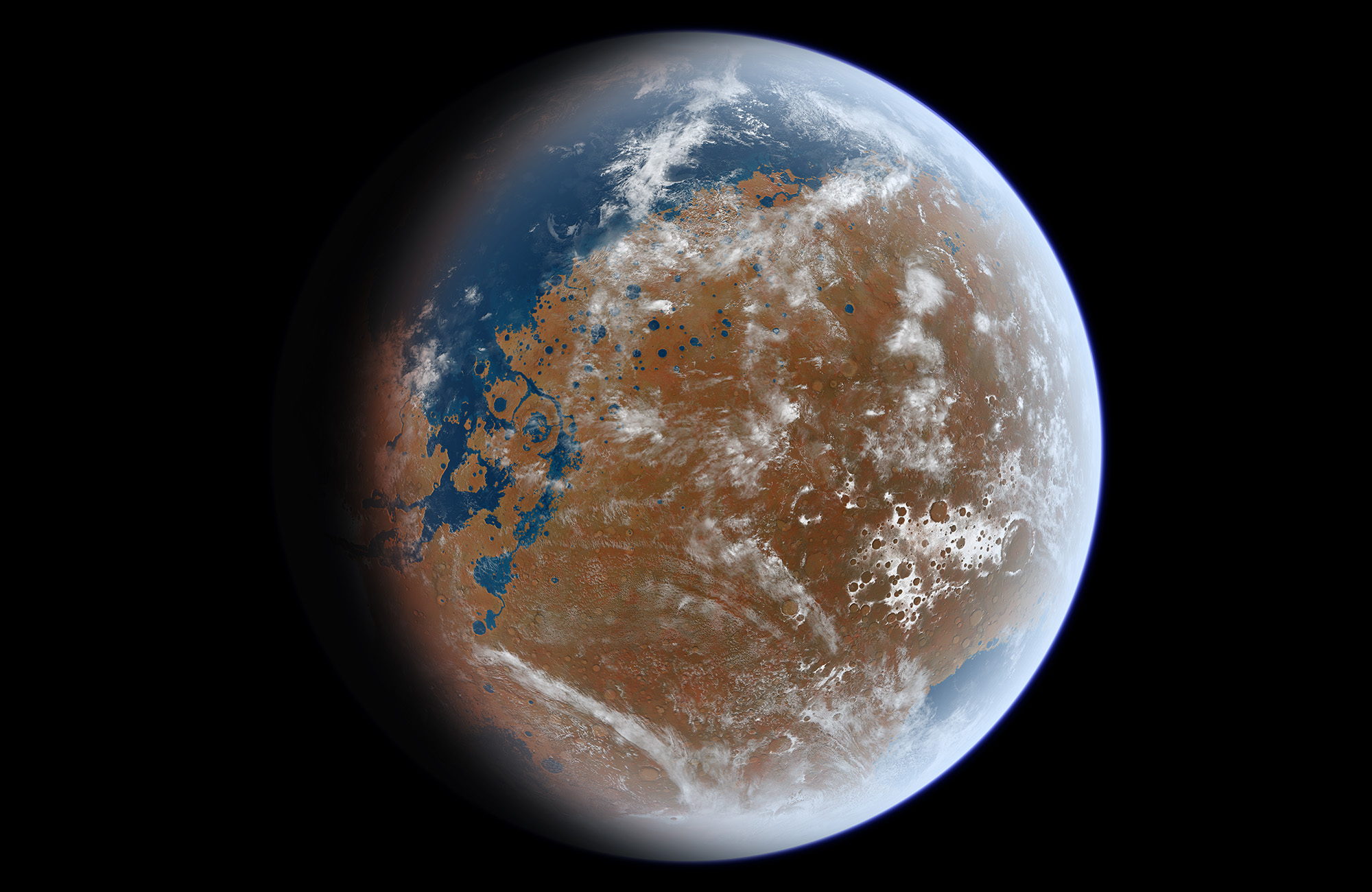
Figure 2: Artist's impression of what Mars may have looked like with liquid water
Formally, the project is deliberate in redefining the prevailing diagram for off-planet habitats. The prevailing precedent has been inflated domes covered by a layer of regolith, which yields dark and claustrophobic habitats with potentially disastrous consequences for crew motivation and mental health. Mars Ice House redefines this typology by innovating a translucent fin shaped double shell structure contained within a transparent ETFE film. The form is driven by a humanist approach with crew comfort and well-being as key design factors.
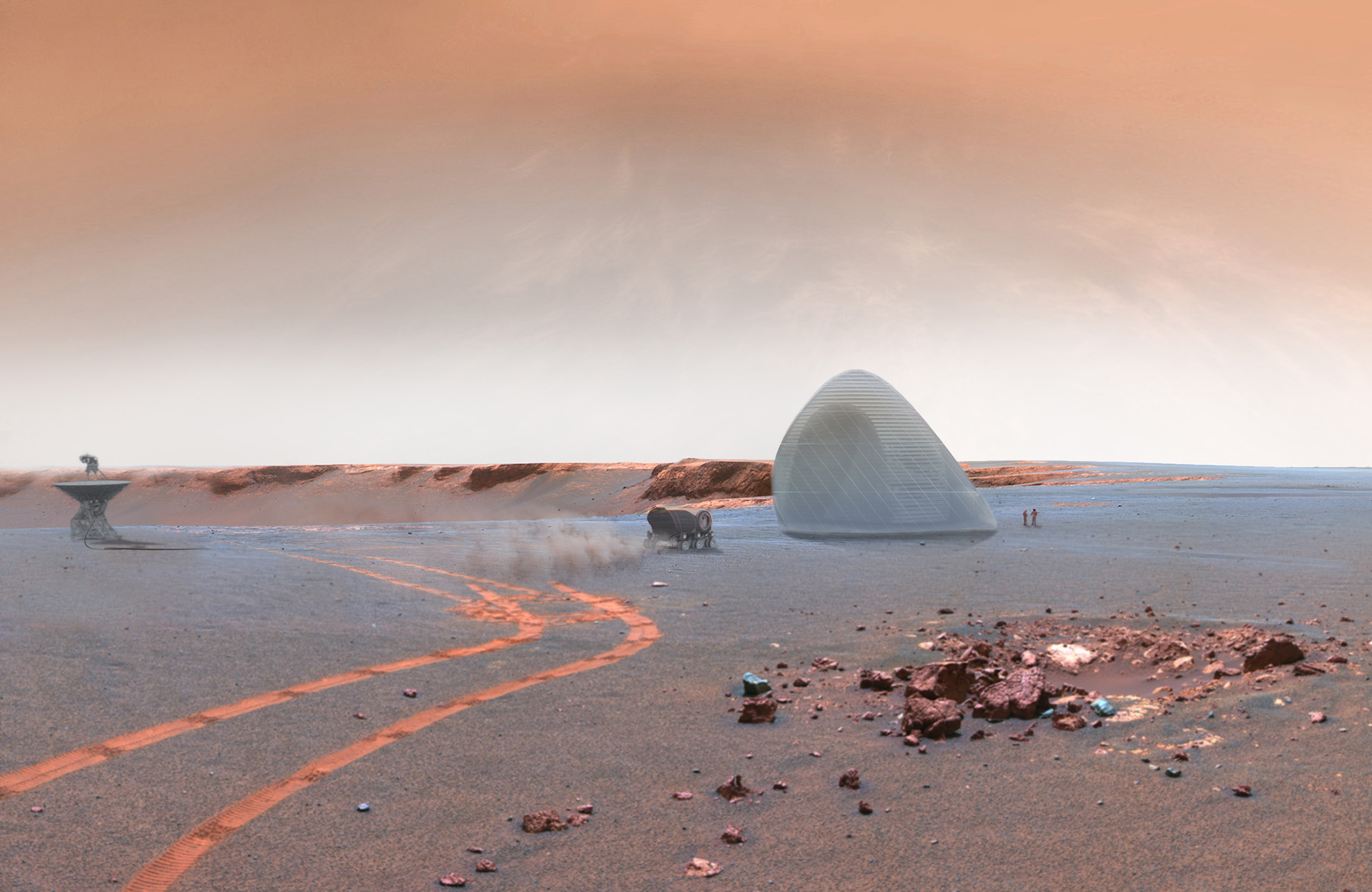
Figure 3: An integral spiral rib allows printing robots to navigate the interior surface of the ice shells
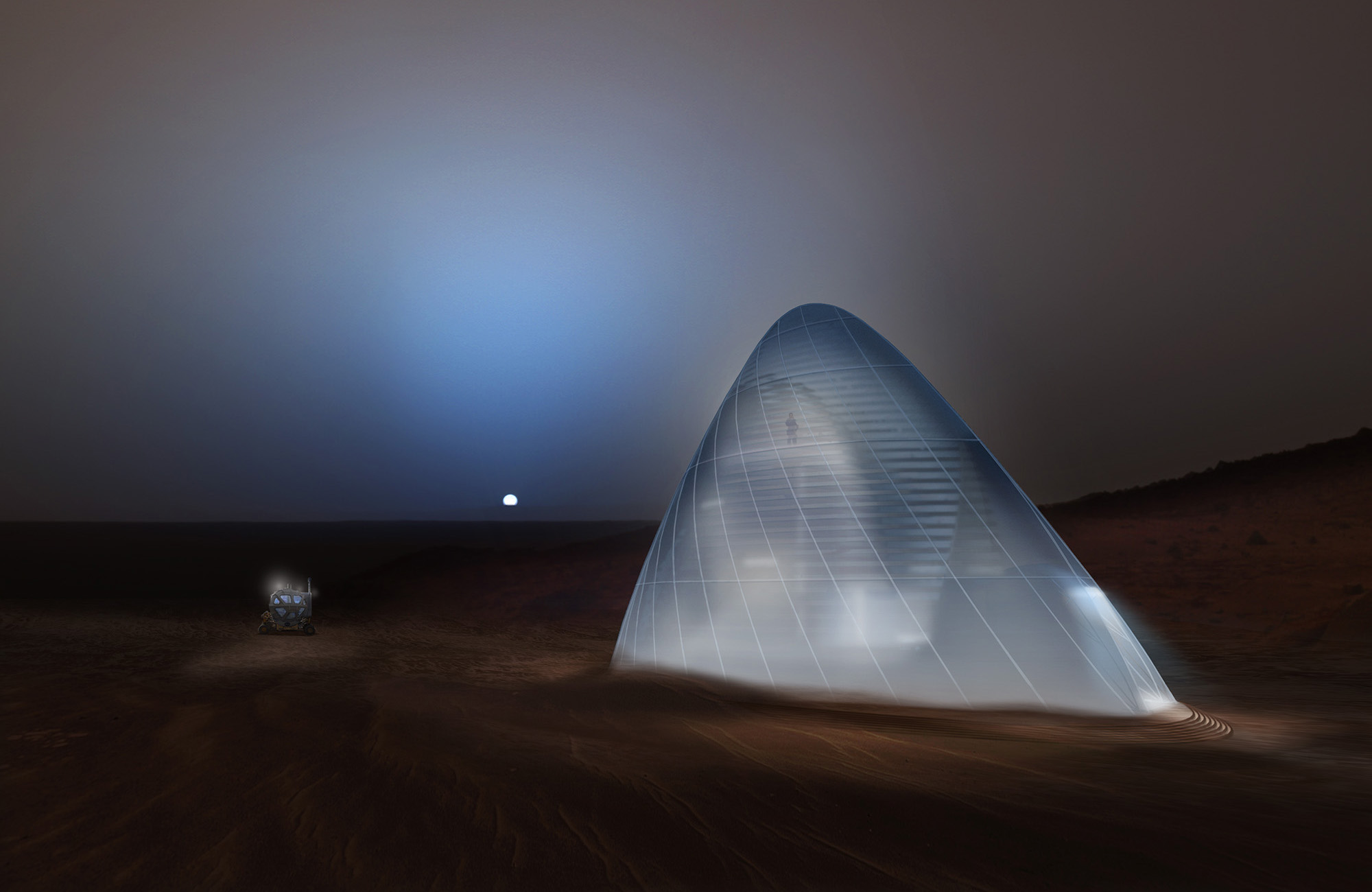
Figure 4: Mars Ice House is 3d printed from translucent ice which shields the crew from radiation, and transforms into a glowing beacon in the Martian night
The 'yard' is an unprogrammed space between the inner habitat and outer shell. This area is not for any specific function (ie. sleeping, eating, working) but an undefined open space for contemplation, relaxation, exercise, game play or anything the crew decides to do. While not fully conditioned, this space is pressurized and can be inhabited with a simple oxygen mask. It also serves as a buffer space, absorbing leaks from the habitat environmental control and life support systems to minimize forward contamination of the Martian wilderness.
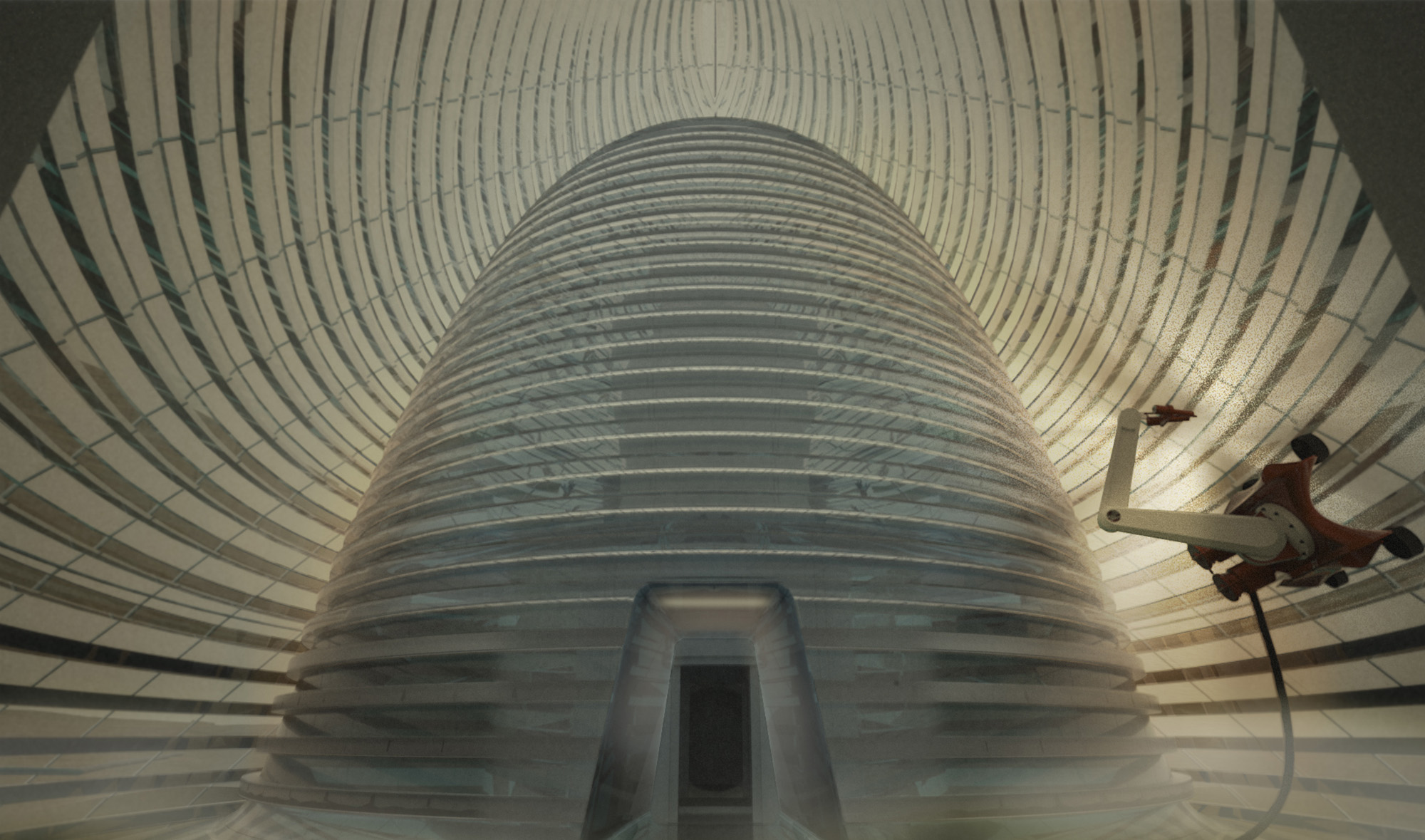
Figure 5: A contemplative yard space between the two ice shells serves as a buffer to prevent forward contamination of the Martian environment
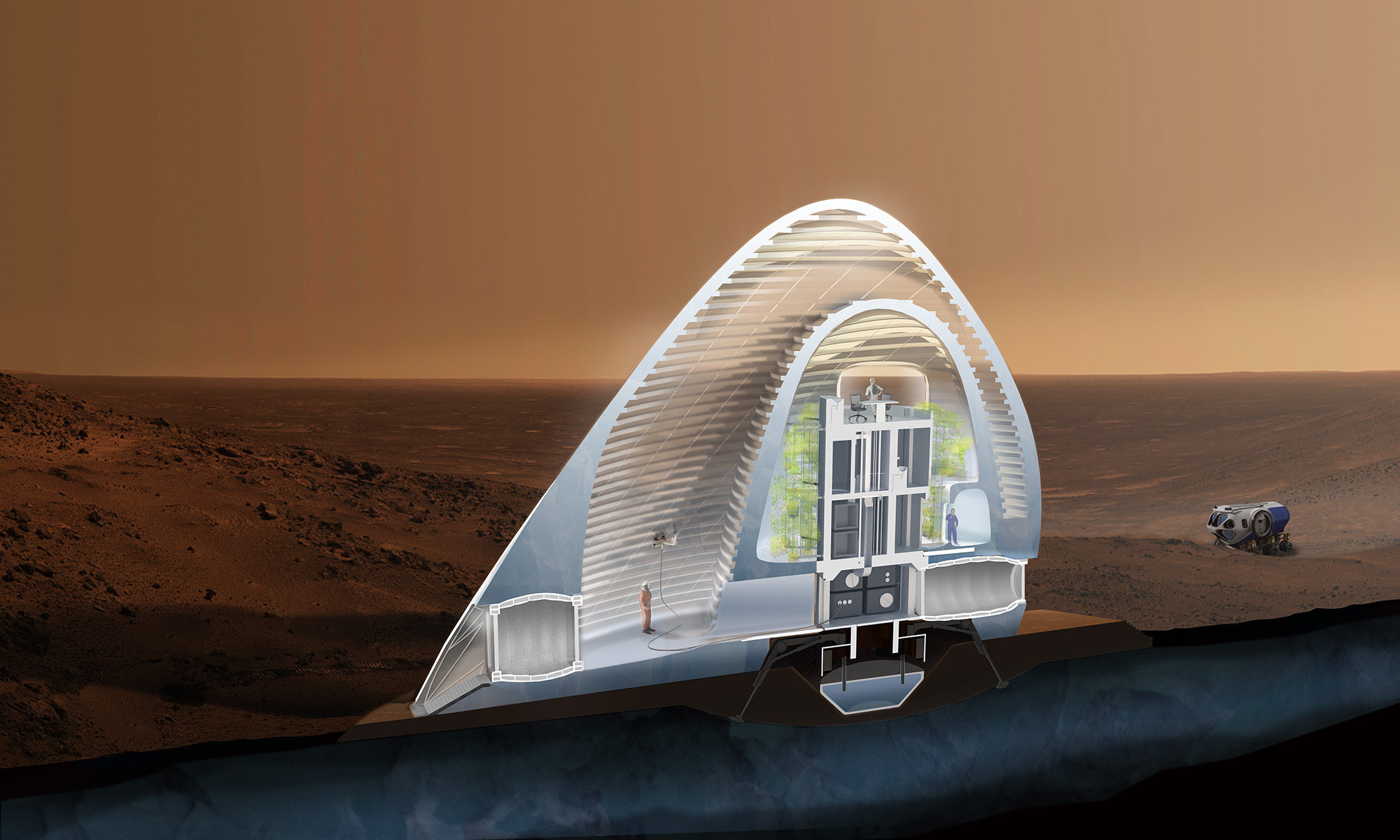
Figure 6: A double ice shell housing programmatic spaces within its layers is 3d printed around a lander habitat. A vertical greenhouse between the habitat and shell forms the crew’s yard
Why ice? Water ice is an effective radiation shield, diminishing both ultra-violet solar and galactic gamma rays to safe levels with only a 5cm thick shell. Ice is translucent allowing natural daylight to stream into the dwelling connecting inhabitants to circadian cycles necessary for maintaining healthy bio-rhythms. The translucency gradient of the ice shells can be modulated to achieve transparent windows allowing for views of the Martian landscape beyond, which has been proven to improve crew morale and psychological well being. Water ice is abundant in the northern latitudes and easily extracted as it's covered by only 30cm of loose regolith.
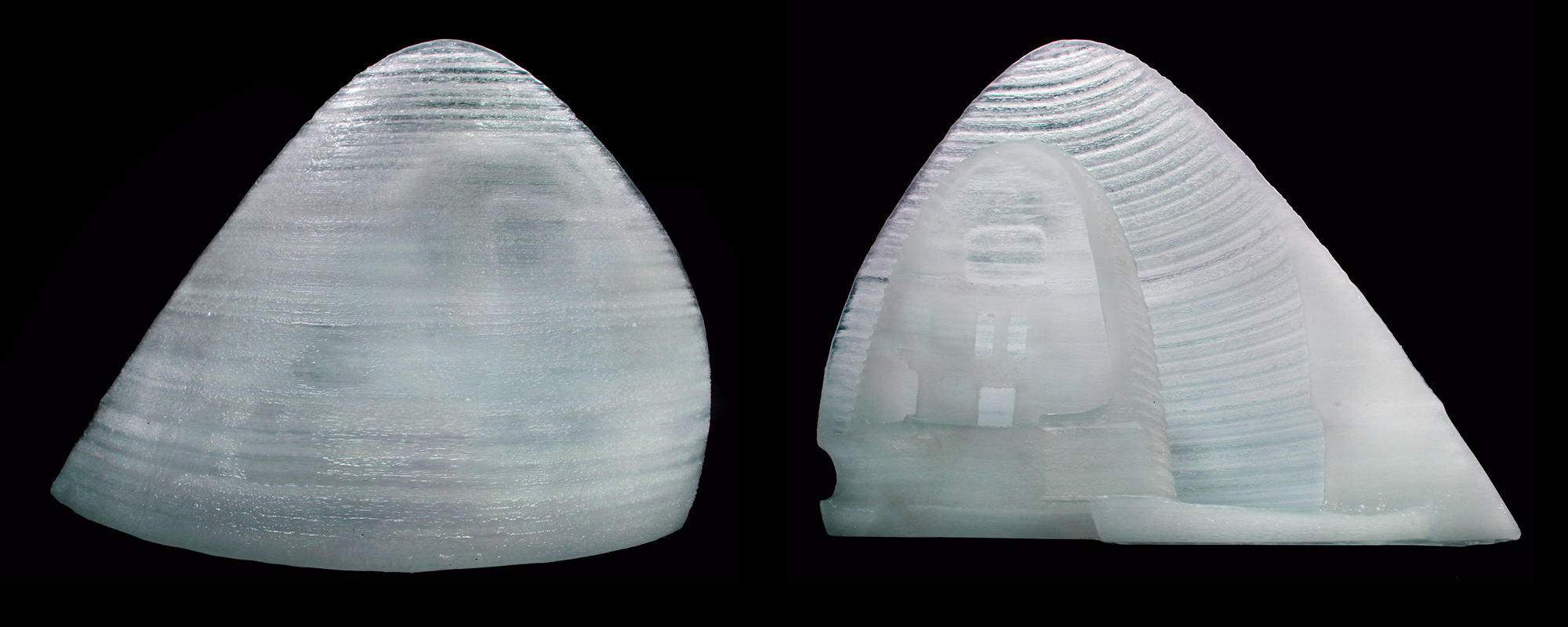
Figure 7: Photographs of a 3d printed scale model of the ice shells fabricated by McGill University
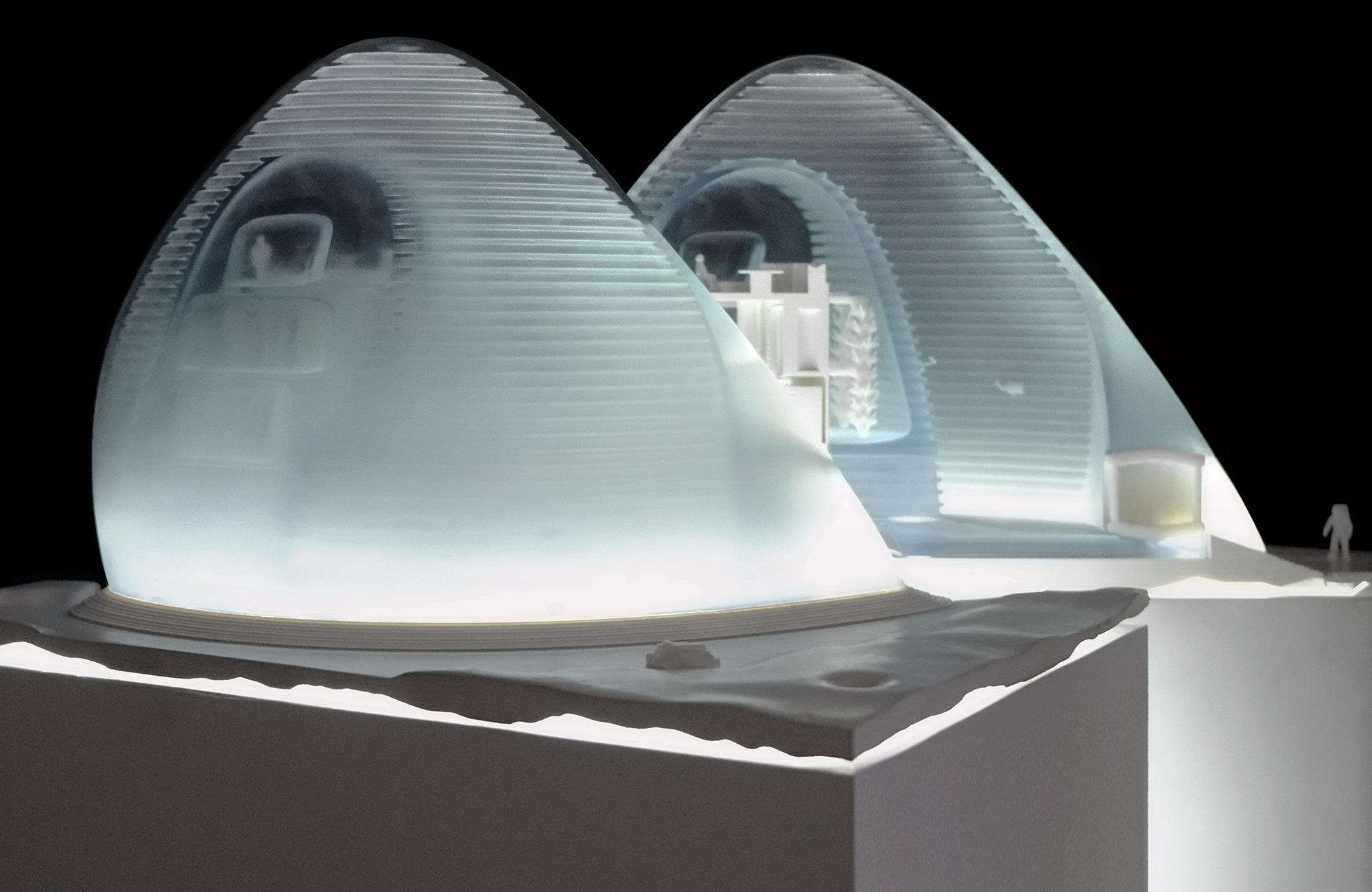
Figure 8: Photographs of a 3d printed 1:75 scale model in resin
It takes less energy to process and print with water, since the natural climatic and atmospheric conditions (below freezing with low humidity) allow us to take advantage of the physics of phase transition.

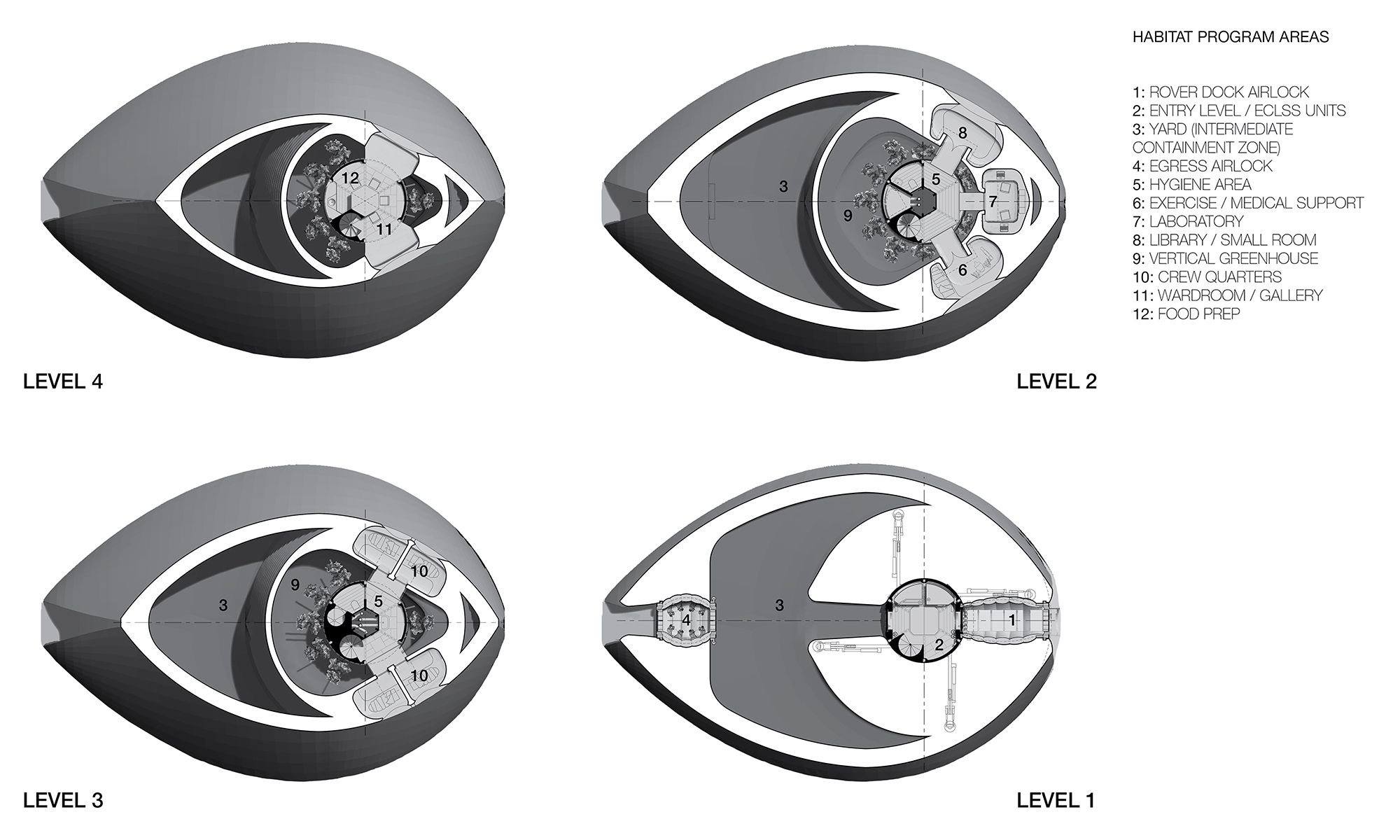
Type: Extra-planetary Habitat
Location: Northern Slopes, Alba Mons, Mars
Date: September 2015
Client: NASA / America Makes
Project Design Team:
Clouds Architecture Office
Ostap Rudakevych, Masayuki Sono, Yuko Sono
Space Exploration Architecture
Christina Ciardullo, Kelsey Lents, Jeffrey Montes, Michael Morris, Melodie Yashar
Consultants:
Jared W. G. Atkinson; Planetary Geophysics, MIT
Asmbld Construction Robotics: Petr Novikov, Yaz Khoury
Maria Banks PhD, Geology and Planetary Scientist, Planetary Sciences Institute
Kim Binstead PhD, Associate Professor, ICS Depatment, University of Hawaii
Casey J. Handmer PhD, Applied Mathematics, California Institute of Technology
Stefan Harsan Farr, Engineer and Software Architect
Jeffrey H. Hoffman PhD, Professor of Practice of Aerospace Engineery, MIT Department of Aeronautics and Astronautics
Norbert Koemle PhD, Geophysics, Austrian Academy of Sciences, Space Research Institute
Leslie E. Robertson Associates: Elias E. Matar, Edward Roberts, N. Brent Chancellor
Javier Roa, Orbital Mechanics/Aerospace Engineering, Technical University of Madrid and JPL Research Associate
Pavlo Rudakevych, Roboticist, Aerospace Engineer, Aviator
Markus Scheucher, Physics and Space Sciences, Karl Franzens University of Graz
Special Thanks to:
Dr. Ron Turner, ANSER Distinguished Analyst
Lawrence W. Townsend PhD, Chancellor's Professor of Nuclear Engineering, University of Tennessee
